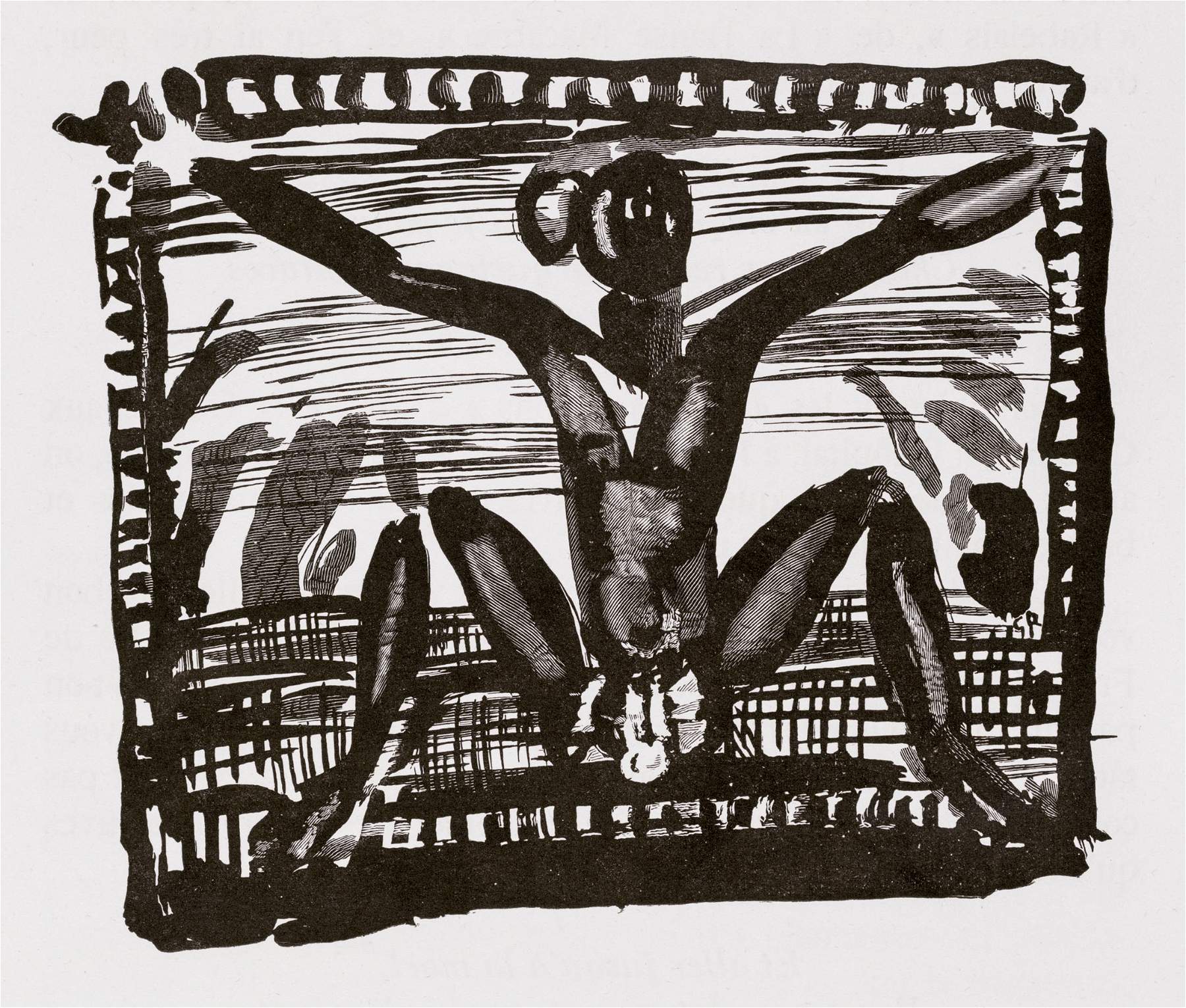Xylographs by Chagall, Picasso, Kirchner and Rouault inspired by African art on display in Carpi
On the occasion of the 19th Biennial of Contemporary Woodcuts, the Museums of Palazzo dei Pio in Carpi will host the exhibition Personae from September 13, 2019 to January 6, 2020, an exhibition featuring woodcuts by four important artists of the 20th century: Pablo Picasso, Ernst Ludwig Kirchner, Georges Rouault and Marc Chagall. The exhibition, curated by Enzo Di Martino and Manuela Rossi, chose woodcuts that develop the theme of African mask iconographies (in Latin, the term for “masks” is personae), which were an inspiration for European artists in the strand of primitivism. From the last decades of the nineteenth century, with the rise of anthropology studies, primitivism coincided with a desire for a return to the state of innocence of prehistoric civilizations and ’savage’ peoples, and thus as a rejection of modern society.
The exhibition’s itinerary begins with the 47 small-format woodcuts by Ernst Ludwig Kirchner (Aschaffenburg, 1880 - Davos, 1938), contained in the book of poems Umbra vitae written by Georg Haym, a visionary author who died at the age of only twenty-five, a prophet of the catastrophe of a world overwhelmed by technology and a forerunner of the most exaggerated expressionism. The volume contains etchings of Kirchner’s most mature and disconsolate work: this is clear from the small black scenes that precede the poems, the black and red frontispiece, the bright fuchsia endpapers, and the powerful olive green, yellow and black linen cover with two large heads silhouetted against the mountain outline. The elongated heads, drawn with thick, decisive marks, the marked eyes, and the ravaged mouths refer formally and psychologically to ritual masks and the magic they give off.
The exhibition continues with Honoré de Balzac’s Le chef-d’oeuvre inconnu, considered Pablo Picasso ’s (Malaga, 1881 - Mougins, 1973) finest artist’s book, published in Paris in 1931 in 340 copies for Ambroise Vollard’s editions and famous especially for how the Catalan artist develops the theme of painter and model from there on. The volume preserves 67 wood-engraved drawings, small heads and figures traced with essentiality, a formal attention that leads to the core of the representation of the human as form and as substance: it is here that Picasso refers to his profound knowledge of African art, which already impregnates his entire artistic production from the very early years of the twentieth century.
The 105 woodcuts by Georges Rouault (Paris, 1871 - 1958) from Réincarnations du Père Ubu (1932) are sharp, delicate and powerful at the same time, and follow the sometimes subtle sometimes thicker mark of the artist. What is striking about these engravings is the characterization of the characters, with which Rouault emphasizes expressions to make them resemble grotesque and tragic caricatures, which aroused the admiration of the Expressionists. Indeed, if in his first production the painter devoted himself to the depiction of varied humanity(clowns, criminals, pierrots and prostitutes), seen as witnesses of a defeated and humiliated humanity, in this work one senses the spiritualism that characterizes the existentialism of the philosopher Jacques Maritain, Rouault’s spiritual adviser, who soon pushed the painter to become one of the major authors of sacred art of the twentieth century. And so while he was engraving for Père Ubu, he worked incessantly for years on the 58 aquatints of Miserere (1948), 6 sheets of which are exhibited, which exceeds in quantity and format all the graphic cycles that the history of engraving numbers.
The exhibition closes with the etchings that Marc Chagall (Vitebsk, 1887 - Saint-Paul-de-Vence, 1985) made to illustrate The Dead Souls of Nicolas Gogol. In bringing out the Russia of his childhood, it is the characters of the “human comedy,” grotesque, comic and sorrowful at the same time, who are the real protagonists of the story, their faces with strong features and expressions, which refer to the deepest essence of the human being.
The exhibition opens on Tuesdays and Wednesdays from 10 a.m. to 1 p.m., Thursdays, Sundays and holidays from 10 a.m. to 1 p.m. and 3 p.m. to 7 p.m. September 13 and 14 extended hours 10 a.m. to 11 p.m., September 15 hours 10 a.m. to 8 p.m. Closed Mondays, Christmas and New Year’s Day. Tickets: full 5 euros, reduced 3 euros. Accompanying the exhibition is a catalog published by Moggio editore, Rome. For info visit the Musei di Palazzo Pio website.
Pictured: Georges Rouault, Réincarnations du père Ubu de Ambroise Vollard, eaux-fortes et dessins sur bois de Georges Rouault (1928; original etchings and drawings on wood by Georges Rouault, 295 x 197 mm)
 |
| Xylographs by Chagall, Picasso, Kirchner and Rouault inspired by African art on display in Carpi |
Warning: the translation into English of the original Italian article was created using automatic tools. We undertake to review all articles, but we do not guarantee the total absence of inaccuracies in the translation due to the program. You can find the original by clicking on the ITA button. If you find any mistake,please contact us.





























